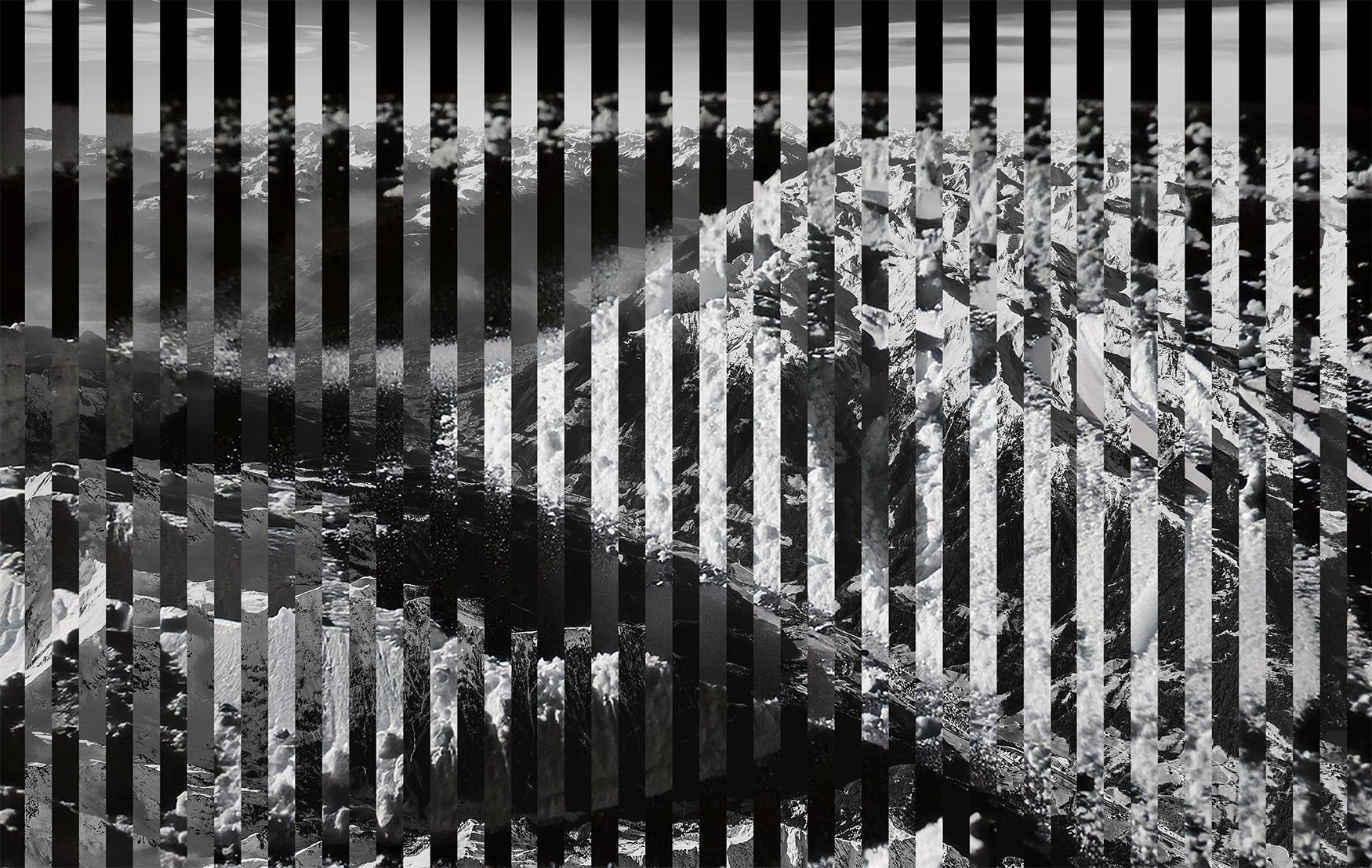 Features
Features
Is 'The Sesh' starting to catch up with Millennials?
Attitudes to drugs have changed significantly since the late '80s, becoming more widely used and socially acceptable. But while Gen Z are embracing sober curiosity, the toll of sustained drug use is becoming more pronounced in older generations. David Hillier reports
“Shall we buy another bag?”
For the sesh habitué, this question, typically posed somewhere on the perineum between a pub or club closing and sunrise, is a well-worn trope.
That cocaine ordered now will be laced with levamisole (a canine worming treatment) or benzocaine (a numbing agent typically found in dentistry) is a mere triviality to the early morning dopamine fiend. Because the spirit of the sesh is one of endurance – fuelled not just by coke but alcohol, ketamine, mephedrone, tusi, CK, psychedelics, literally anything – with ramifications for health be damned.
But is the sesh starting to have a deeper toll – beyond that of maxed-out overdrafts, existentially challenging Tuesdays, and first name terms with your local Deliveroo drivers?
England and Wales’ recent annual drug death statistics revealed a record increase in deaths related to drug poisoning to 5,448 people. 47% of these involved an opiate, but most eye-catching were the cocaine deaths. These spiked by 30.5% in one year to 1,118 – nearly 10 times that of 2011. The biggest cohort for these is now 30 to 39-year olds, who suffered 351 fatalities.
Numbers of people accessing treatments services for powder cocaine also rose by 10% from 2022 to 2023 (to a record 23,259 people), plus there’s near record alcohol-related liver disease deaths in over-35s, and 2023 also recorded the third highest statistics for MDMA-related deaths (79): nearly half (39) of which were 30 years old and over.
So: how did we get here and, in an era where Generation Z are embracing sober curiosity – and doing less cocaine with the most recent drug use stats showing a 25% reduction in use amongst 16-to-24-year-olds across a single year – how do the nation’s sesh perennials evolve towards a healthier future?

The British disease
‘The sesh’ entered the vernacular in 2015 via a Facebook group named Humans Of The Sesh. Its admins, using the monikers Brown Sauce and Grand Feen, posted memes venerating a lifestyle of late nights and longer mornings which only ended when the last wrap was licked clean.
A VICE article published the following year declared that 2016 – our communal annus horribilis incorporating Brexit, Trump’s first election and a roll call of heroes' deaths: from David Bowie to Prince to murdered MP Jo Cox – was “the year of the sesh”.
The writer Angus Harrison makes a link between these short-term triggers and a broader, austerity-led atrophying of culture and opportunity for the sesh’s rise to prominence: "The sesh is basically club culture with all the “culture” bit sucked out," writes Harrison, going on to posit that “2016 wasn’t the year we got angry, it was the year we gave up. As such, the sesh, the meme-ification of nihilism, was the perfect response.”
Read this next: Inside The Rise Of Tusi, Colombia's 'Pink Cocaine'
Humans Of The Sesh was the progenitor for a flurry of platform-spanning sesh meme accounts, of which the still-active Ketflix & Pills became the exemplar of. 2016 also marked a momentous moment for UK drug culture when The Loop, a harm reduction organisation co-founded by the criminologist and researcher Professor Fiona Measham conducted the country’s first-ever drug checking service at the Secret Garden Party festival.
Measham, who is the Chair in Criminology at Liverpool University, has been writing about UK drug culture since the early 1990s. Among her many contributions to this field, she, along with early harm reduction pioneer Russell Newcombe, helped popularise the “normalisation” thesis regarding a new cultural acceptance of illicit drugs.
“For an average British person during the 1980s, the image of drug use meant the heroin epidemic which had emerged largely thanks to the country’s shutting down of heavy industry and increased homelessness. These drug users were also contaminated by the drug’s association of heroin injecting with the AIDS epidemic,” says Measham. Then came 1988, acid house, and its psychoactive firestarter: MDMA, or ecstasy.
“Taking drugs suddenly wasn't just about escape and oblivion, it was about celebration and socialising. A few people fell by the wayside but, generally, most people had the time of their lives. The change in cultural perception of who a drug user might be was extraordinary,” Measham says.
Ecstasy became increasingly visible within popular culture throughout the 1990s – from ‘Ebeneezer Goode’ and its veiled references to taking pills, to beloved club culture film Human Traffic. Yet MDMA users’ preference for water over booze posed an economical headache for a booming night-time economy that was being used by Tony Blair’s Labour as a driver of civic revival in towns that Thatcherite recessions left to rot.
To combat this – and with the media-led furore around Leah Betts’ 1995 ecstasy-related death still ringing in the ears of a nation of worried parents – alcohol producers developed alcopops and alcohol-containing energy drinks. These, along with the doubling of wine’s consumption between 1980 and 2000, and 2003’s Licensing Act which quickly dished out extended licensing hours to over 50,000 venues, helped make drinking spaces no longer the simian preserve of Stella-swilling blokes.
Coke’s own normalisation occurred in lockstep: use more than quadrupled since Liam Gallagher sang about ‘doing the white line’ in Oasis’ 1994’s proto sesh anthem ’Cigarettes and Alcohol’. It reached record levels at the height of ‘indie sleaze’ in 2008/2009, when 6.5% of young people took packet. For a nation fizzing with a culture of extreme drinking – one that Tony Blair labelled “the British disease" and still endures with 2023 research suggesting we’re the third highest binge drinkers across 33 countries – cocaine helped maintain a perfect hedonistic ouroboros.
Read this next: Why is cocaine so strong at the moment... and where's it all coming form?
The drug’s stimulating properties sharpen up the soporific effects of GABA, the relaxing neurotransmitter released by booze, while keeping your neural pathways flooded with dopamine: a reward chemical that makes everything – whatever you hear, say, share, learn, even that one mate that always talks about the pyramids at 5:AM – more meaningful and motivating to hunt more of.
Measham suggests that “some of this group have carried on with drinking and drug use, though not as often,” and it’s fair to speculate that these perma-cainers are the kind of people falling foul of their habits.
While newspaper reports of festival drug deaths tend to concern younger people overheating from MDMA, Measham tells Mixmag that “it's not unusual for the person dying in the festival dance tent at 4:AM to be a dad of an older millennial age.” She says The Loop's annual survey shows that one in six festival drug takers only take drugs at a festival. “Perhaps they’re ravers or partygoers who became parents but leave their kids with their grandparents for an annual blowout. He’ll take loads of pills and cocaine like he used to, but he’s lost his tolerance and both drugs are much stronger now, so he has a heart attack. It’s absolutely tragic,” she adds.

Heart of the matter
Measham tells Mixmag this a couple of days before we speak to Harry (not his real name). He’s 36 and from Norwich – where he first attended free parties when he was 16-years-old – but came to Brighton for university. “I started partying quite hard,” he says, often taking cocaine a couple of times a week, with MDMA on occasional rotation.
He worked in hospitality for about 10 years, in clubs and pubs, DJing for extra money, where drinking and drugs were “the regular. It was so accessible”. He tells Mixmag about working at one club. “You were drinking on shift, doing a few bumps here and there. It would shut at 4:AM but sometimes you wouldn’t leave until 7:AM, then, you know, if somebody wants to carry on you go back to theirs.”
Underpinning everything – beyond Brighton’s transient population of students, stag-dos, tourists and trustfunders fuelling a motorcade of all-night bash cocaine dealers – was Harry’s hum of anxiety. “So to loosen up, I’d have a few pints. Then, before you know it, somebody arrives with a bag. That anxiety melts away and you chat all night, forgetting about everything. Until the next day anyway.”
Read this next: Why DJs and ravers are embracing sobriety
Things changed when his partner got pregnant and he didn’t take any drugs for two years. After they separated, Harry “took things quite hard” and bought a bag of MDMA for last New Year’s Eve. He was down to the dregs when he had one final line on his sofa at 6:AM. He instantly knew something was drastically wrong. “I couldn’t breathe and it felt like a 10-tonne weight on my chest. It was scary, terrifying.”
He spent the next four days in hospital and is, thankfully, fine now while avoiding Class As like one might a rabid, malevolent dog. Harry says that, due to their being no long-term damage, the doctors refer to is as a “cardiac event” rather than a heart attack. “But, basically, my heart stopped getting enough blood. I put it down to those years of booze, bag and sesh.”
Death data dig
An anomaly of the deaths data is that it can’t segregate powder cocaine from crack. But fatalities are rising in tandem with purity – average UK coke strength was 20% in 2009 and 63% in 2018, though 2023 analysis aggregated from drug checking services across eight EU countries found that 75% of cocaine is now 75.5%. Many dealers, especially those on Telegram, also now offer a near 100% option, and accessibility to cocaine has turbocharged with most after party nitties in urban areas having a 24/7 number – a partial symptom of the Albanian OCG-led takeover of the UK cocaine market since around 2015.
The average ecstasy pill is also now roughly double that of the 1990s (around 200mg over circa 100mg) with a regular presence of ‘super strength’ pingers that can be two or three times a recommended adult dose. This unpredictability and variation in strength add to the risk.
While the stats do not demarcate between cocaine powder and crack, we can dig deeper to make some well considered guesses about the profile of the fatalities. So Mixmag called Dr Caroline Copeland from The National Program Of Substance Use Mortality (NPSUM) from King’s College London, who talked us through mortality data from 2023.
Read this next: How to protect yourself from super-strength ecstasy
The first thing to note is that there’s a time lag within the statistics, and numbers of deaths have increased since the data Caroline analyses with Mixmag was released. Also, low levels of alcohol have been discounted as this is naturally produced post-mortem.
Caroline explains that crack users are more likely to die with other substances present – like heroin, street benzodiazepines or cannabinoids – and also be using dependently. The main thing she points towards is, of the 502 people dying from “cocaine and other drugs implicated”, 32.4% are employed (79.9% male).
Of the 246 people that died with only cocaine, 55.1% were employed (85.1% male). “We can infer from these stats that the second cohort are more likely to be employed and less likely to be dependent, and possibly more likely to be recreational powder users,” Caroline says.
More eye-opening is the age of a person likely to die from solely cocaine versus a user of all other drugs (ie: someone with a higher chance of being a recreational cocaine powder user versus someone more likely to be a dependent drug user). This was 39.7 years-old instead of 45 years-old. “Firstly, that’s nearly five-and-a-half years of extra life. But it also suggests that people who are solely dying from cocaine use – who we know are more likely to be non-dependent and recreational powder users – are dying younger and within that millennial age bracket,” Caroline says.

Cocaethylene – the deadly sesh staple no-one knows they’re taking
A quashed World Health Organisation report from the early 1990s found that “occasional cocaine use does not typically lead to severe or even minor physical or social problems” yet a recent meta-review that analysed over 170,000 deaths of people that had regularly or problematically used coke found an elevated risk of death by suicide, homicide, accidental injury and AIDS-related fatalities. 2014 Spanish research also found that coke was “associated significantly with an increased risk for sudden cardiovascular death in people aged 15-49 years”.
What the average users – whether getting on it once a year, month or week – might not know about it is cocaethylene: a substance that’s uniquely synthesised when your body tries to metabolise cocaine in the presence of ethanol.
“People are more addicted to cocaethylene than they are to cocaine or alcohol,” says Dr Rayyan Zafar, postdoctoral fellow at the Centre for Psychedelic Research and Neuropsychopharmacology at Imperial College London. “Around 90% of cocaine users use it with alcohol. And so when we talk about cocaine addiction or when we talk about cocaine deaths, we may actually be seeing the impact of cocaethylene addiction and deaths.”
Read this next: Insta-gram: How British cocaine dealers got faster and better
Zafar points to a recent systematic review from The Netherlands that found an 18 to 25-fold increase in the chance of sudden death from cocaethylene exposure to cocaine alone, plus greater chance of myocardial injury or cardiac arrest.
“Cocatheylene takes double the length of time to be metabolised from the body so it has longer lasting effects,” says Zafar, adding that we need much more public health messaging around cocaethylene emphasising its many dangers: “It has an inhibiting effect on your cardiac ion channels. If these shut down, it could lead to myocardial infraction [heart attack].” Your livers and kidneys also experience what he calls a “triple-whammy” as, not only are they metabolising cocaine and ethanol, but this third interloper substance.
Dance into the light
Joanna Barber, 41, is the co-founder of The Other Side Of Fear – a coaching and mentoring agency that supports retiring ravers on sobriety journeys. She runs this with Dan de Panizza, 36, a freelancer based out of Puerto Escondido in Mexico that she met at a rave around 13 years ago.
Jo’s day job is a DJ booking agent which she's been doing for around 10 years. “When I started out, I knew no one in the industry that didn't take drugs,” she tells Mixmag. “It was just a given that everyone would be getting on it and everybody would be drinking like there was no tomorrow. It was part and parcel of everything. We’d all be in the club’s green room doing drugs – that’s where we did business, connected, networked. Then there was the afterparties.”
Barber has been sober from alcohol since May 2023 and also cocaine-free, though until recently “might do half a gary at a festival or friend’s birthday.” However she recently vowed to go completely sober for 2025, with “no caveats”. She says that she’s “noticed more of a sober movement coming, especially with the older DJs. They’ll be asking for alcohol-free riders now.”
Dance music’s trickily codependent relationship with drugs is tale as old as the Castlemorton hills. Recently, DJs like Patrick Topping and MINA have both run their own sober parties with the former, who started performing sober in 2017, telling Mixmag in 2022: “I went sober for a few reasons, mainly because I was sick of feeling horrific after a night on the drink or a bender. It had actually started to tarnish the enjoyment of DJing a little bit too, and was making the prospect of doing a gig seem daunting sometimes, because I knew I was in for a big one and the aftermath that followed.”
Read this next: Do you have to do drugs to enjoy dance music?
Barber says the clients for The Other Side Of Fear are mostly ravers and “mainly millennials, for sure. You don't really get anybody clocking that things are a problem before 30, 32 years old. Then you get to that stage where society expects you to have kids or a career or a partner. That’s when people start thinking: ‘Could it be my lifestyle that gets in the way of that? Could it be the drugs and the alcohol?”
She also reveals that most of their clients are women, acknowledging this is likely due to her and Dani being female. But it’s also perhaps reflective of another age-old tragedy fable: men not asking for help. Whatever metric or lens you seek to analyse collective mental health through – whether drug deaths, alcohol deaths, drug use, suicide – the numbers for men are exponentially higher.
“When I think about the people that I know that have struggled the most with drugs – the people that I know that have been to rehab or have had to be sectioned – they're all men,” says Barber. “Women go looking for help. Women like the power of community, too, so they will be happier to bare all and be vulnerable, whereas men find that very difficult.”
Mixmag found her through a podcast called Crave The Rave. It’s a riot of sesh and raving nostalgia that is refreshingly free of the lame, laddish misogyny that can taint his part of online culture. (Being presented by two women, Lara and Jessie, both of whom have mostly left his lifestyle behind with Jessie now a mother, probably helps.)
Lara, 36, tells Mixmag that after 15 years of pretty much weekly international raving, the major lightbulb moment for her was a routine fertility test which revealed she had a low ovarian reserve. “They had a lot of questions for me around alcohol consumption, around smoking, around vaping and around drug-taking,” she says, adding that, “I was like: ‘What the fuck am I messing with? What if getting on it for all these years is now the reason that I can't do this sacred thing that my body was made to do?’”

"Shall we buy another bag?"
In his book Psychonauts, drugs writer and historian Mike Jay writes about Sigmund Freud’s early penchant for cocaine which resulted in 1884’s floridly composed Über Coca paper. Jay posits that Freud originally saw coke as a salve for a condition called ‘neurasthenia’ – a relatively new disease of the nervous system brought on by what Jay calls “the pace of life and the demands of business and industry [which] were pushing the human machine beyond its natural limits.”
A personal view is that the sesh – and particularly coke’s place within its DNA – is a bit misunderstood. There’s clearly a strata of oblivion-seeking and trauma numbing, while supposed use by the boorish hooligan element is not very edifying and it’s definitely bad for the planet, but most users we know use the sesh to temporarily find their own form of neurasthenic relief, while connecting with people in a way they generally feel too self-conscious to do.
This feels especially true for men: particularly men in a divided, deprived country where “Keep Calm and Carry On” is literally a national mantra, and who don’t have the natural cues – and perhaps the communities – to slow down.
It can then become a fiendish social crutch to unpick, largely due to coke’s skill at reorganising your reward hierarchy: broadly meaning that anything that doesn't result in a massive dopamine dump becomes less interesting – so you just gravitate towards it, seamlessly, especially after your rational decision-making brain has been impaired by four quickfire post-work pints.
Read this next: DJs share their tips for going sober in the rave
But it doesn’t have to all be negative: “The sesh is a big part of British culture yet it’s still taboo, it’s got this shame attached to it. But we had such an amazing time and it shaped who we are,” says Lara from Crave The Rave. “We spent so many years meeting weird and wonderful people in strange situations. It made us really open-minded. But there comes a time when you have to leave it – this piece of your identity – behind, and that is hard.”
It’s now almost a cliché to say that a more wellbeing conscious (and skint) Generation Z are drinking less – they are – but 16-to-24 year old drug use has also nearly halved since 2001, when 30% had used a drug in the previous year. The most recent stats had this down to 16.5% (though ketamine use is thriving with a five-fold increase in people reporting for treatment since 2014).
“Self-awareness and self-presentation on social media have led to a situation where young people don't want to be spangled all weekend and post it online,” says Fiona Measham, who will continue working with The Loop to, hopefully, make drug checking a norm in more UK city centres – reducing deaths and drug-using stigma in the process.
A recent report by the European Drug Agency found an average time lag of 13 years from someone first using cocaine to reporting for treatment: from 22-years-old to 35-years-old. With the sky-high purity of drugs, its societal ubiquity and availability, plus an increasing body of evidence pointing to its increasingly ruinous effects, the time to say no to that regular reload bag has – in all probability – arrived for millennials. Especially the older crew.
“Sorry mate, changed our mind about that order lol. Gonna knock it on the head for tonight :)”
David Hillier is a freelance writer, follow him on Twitter


